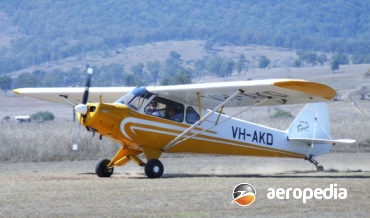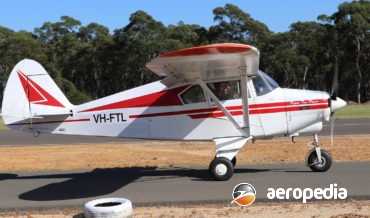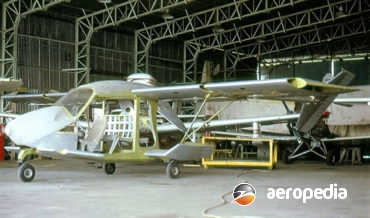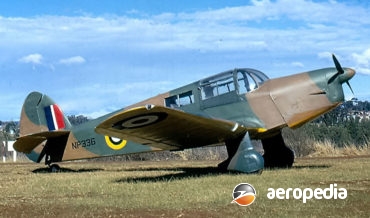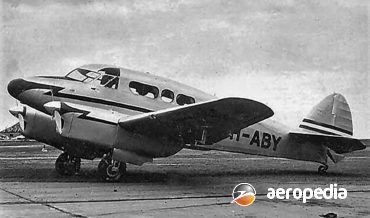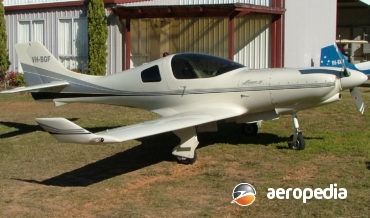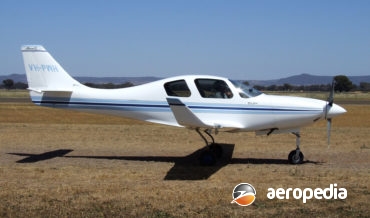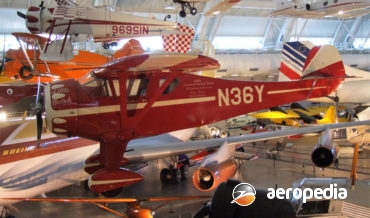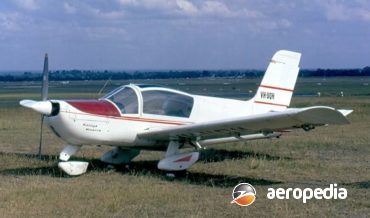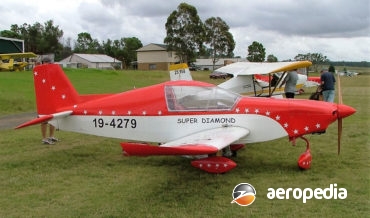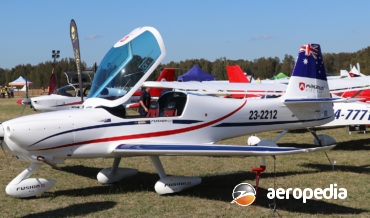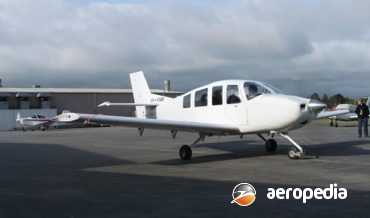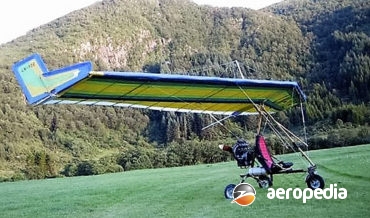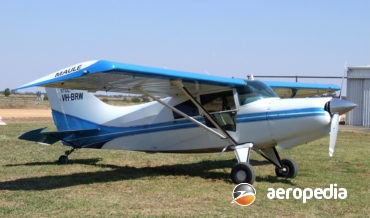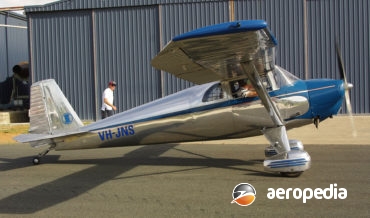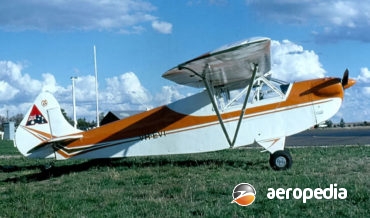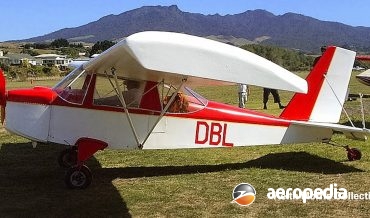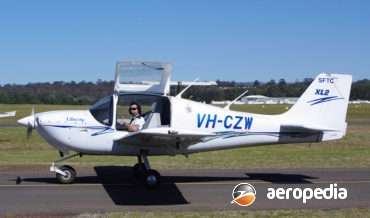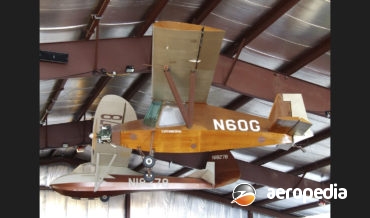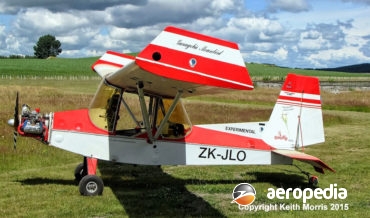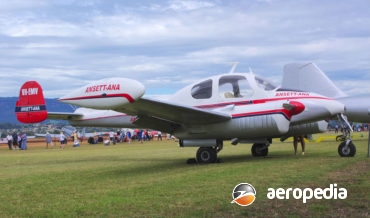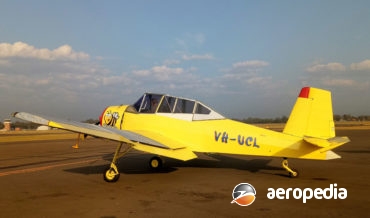All Contents
Contents
The first Cub was the E-2, designed by the brothers C G and Gordon Taylor, and it was powered by the Brownbach Kitten engine, eventually replaced by the Continental Motors A-40 of 28-kw (37-hp).
David C. Eyre
- May 8, 2019
The Piper PA-22 Tri-Pacer appeared on the market in 1951.
David C. Eyre
- May 8, 2019
Designed as a single-engine, high-performance executive aircraft, the Comanche was developed and sold in large numbers throughout the world and, when production concluded in the 1980s when floods destroyed the production line at Lock Haven, some 4,856 examples had been completed, comprising 1,143 Model 180, 2,537 Model 250, 1,028 Model
David C. Eyre
- May 8, 2019
Following on from the PA-24 Comanche series, the Cherokee, like the Cessna 150, 172 and 182 series was designed to meet the requirements of training organisations and private owners for a cheap, economical and practical aircraft for private use.
David C. Eyre
- May 8, 2019
The TWA-3 was designed and built for submission to the Australian Government to meet a requirement of the RAAF for a training aircraft to meet the Australian commitment for pilots at the beginning of World War II.
David C. Eyre
- May 8, 2019
The Jeanie Teenie was designed by Calvin Parker of Coolidge, Arizona and was his first design and was known as the JT-1 and was first shown to the public in 1967, its initial development taking place in Alabama.
David C. Eyre
- May 8, 2019
The Bush Boar STOL 19-8472 was a one-off two-seat light sport aircraft designed and built by Robert Pavan. It commenced life as a Calair CA-21 Skyfox and was registered 55-0608 on 5 November 1990.
David C. Eyre
- May 8, 2019
The Airjeep (in some references referred to as the Air Sedan and PL-13) was designed by well known Australian aircraft designer, Luigi Pellarini, designer of the Fawcett 120, Transavia PL-12, Victa R-2, Kingsford Smith PL-7 Tanker and a number of other projects, including what was to be the PL-9, a
David C. Eyre
- May 8, 2019
The Percival Proctor I was basically a Vega Gull altered to meet a specification by the British Air Ministry for a communications aircraft suitable to meet the requirements of the Royal Air Force, this being achieved by the reduction of seating capacity from four to three, and redesigning the cabin
David C. Eyre
- May 8, 2019
The Percival Q.6 was designed by Edgar Percival in about 1937 as a twin-engine monoplane with accommodation for four passengers in executive comfort and a crew of two powered by two Gipsy Six engines.
David C. Eyre
- May 8, 2019
Designed by the company Peter Nunn & Associates Pty Ltd of Fitzroy, North Victoria, the prototype PN-2 (VH-PII - c/n P-002) is an all-metal two-seat low-wing monoplane with a bubble canopy powered by a converted Mazda 13B rotary motor-car engine.
David C. Eyre
- May 8, 2019
Following the success of the Lancair 235 series, the manufacturer introduced a larger fuselage, increased flap effectiveness and a lengthened undercarriage with an oleo-pneumatic nose strut.
David C. Eyre
- May 8, 2019
The Lancair 360 is a development of the earlier 200, 235 and 320 series and has optional wingtip extensions that increase wingspan from 7.16 m (23 ft 5 in) to 8.3 m (27 ft 2 in).
David C. Eyre
- May 8, 2019
One of the new breed of modern light high-performance kitplane homebuilts, the Lancair series has been developed over the years ito a number of models, the Lancair IV being released to amateur constructors in 1990. In 1991 a Lancair IV set a world speed record from San Francisco to Denver,
David C. Eyre
- May 8, 2019
The Monocoupe was originally designed by Don Luscombe but evolved through a number of models by the efforts of Luscombe and Clayton Folkerts and was built in large numbers from 1928 to the later 1950s with a variety of engines.
David C. Eyre
- May 8, 2019
Flown for the first time on 10 June 1959, the MS-880 Rallye was a fully aerobatic, all metal, cabin monoplane possessing an extremely simple but rugged construction.
David C. Eyre
- May 8, 2019
The Super Diamond is a single-seat light sporting aircraft produced in kit form by Miranda Investments of Riverwood, NSW, later becoming Morgan Aero Works of Taree.
David C. Eyre
- May 8, 2019
Developed during World War II as a liaison aircraft for the RAF, the prototype of the Miles M-38 Messenger series (U-0223) was flown for the first time on 12 September 1942 at Woodley, UK.
David C. Eyre
- May 8, 2019
The M-9 series was introduced to the Maule range of aircraft in 2003 and was offered with four engine options, one of which is the SMA SR-305 diesel engine providing 172-kw (230-hp), this model, known as the M-9-230 being first shown at the EAA event at Oshkosh in 2007.
David C. Eyre
- May 8, 2019
The Magni series of autogyros is produced by Magni Gyro di Magni Vittoria at Besnate in Italyfor the worlds light sports aircraft market. The M-14-Scout 2000, known as the Millenium model, has either the Rotax 914 turbo engine of 86-kw (115-hp) or Rotax 912 ULS 75-kw (100-hp) engine installed.
David C. Eyre
- May 8, 2019
The NM5-100 was designed as a joint development by CSIR-National Aerospace Laboratories [NAL] and Mahindra Aerospace Pty Ltd in India as a multi-mission general aviation aircraft to meet the requirements of air-taxi, training, tourism, cargo and executive aircraft operators, and has been designed to meet FAR Part 23 normal category
David C. Eyre
- May 8, 2019
The Foxbat was one of a number of designs by William Armour which for some years was produced by Manta Products Inc of Oakland California.
David C. Eyre
- May 8, 2019
The Maule M-4 series of light STOL monoplanes was designed by Belford D Maule for Maule Aircraft Corp in 1960, and more than 1,600 examples have been delivered in a variety of models and production continues in Georgia.
David C. Eyre
- May 8, 2019
The Luscombe series of light monoplanes was introduced by the Luscombe Airplane Corp in 1937. Powered by a 37-kw (50-hp) Continental engine, the Model 8, also known as the Luscombe 50, received type approval in August 1938. Production rate was quickly increased to meet demand, with most aircraft being delivered
David C. Eyre
- May 8, 2019
The Luton Major, a tandem two-seat cabin monoplane, was designed by the Luton Aircraft Company in 1939 as a successor to the Luton Minor. The Major was also intended to be constructed by amateurs. Designed as a low-cost aircraft, it could be fitted with a variety of engines varying in
David C. Eyre
- May 8, 2019
The Longster was a single-seat light parasol-wing aircraft designed for amateur constructors in the late 1920s by the Long Brothers who operated a radio factory in Cornelius, Oregon. Their first design left much to be desired and they abandoned that and built the Anzani Longster in 1930, this being a
David C. Eyre
- May 8, 2019
The WR-1 Love was a single-seat high performance gull-wing monoplane designed in the 1950s by Neal Loving and built by Wayne Aircraft Co of Detroit, Michigan. It flew for the first time on 7 August 1950 and qualified as a ‘midget racer’ under NAA rules on 18 August 1951. Sets
David C. Eyre
- May 8, 2019
Two examples of this ultralight aircraft have been completed in New Zealand and commenced life as kits for the Team HiMax but were extensively modified during construction.
David C. Eyre
- May 8, 2019
The Lockheed Sirius was designed by Gerrard Vultee for Colonel Charles Lindbergh, being built at Burbank, California. It was a low-wing monoplane with two cockpits and was used to set a number of US trans-continental records.
David C. Eyre
- May 8, 2019
On 21 April 1964 Lockheed flew a civilian freight example of the military C-130 transport and placed it into low-rate production. This aircraft was used as a civil demonstrator, and was basically a C-130E without military equipment.
David C. Eyre
- May 8, 2019
The Let Z-37 Cmelak (Bumblebee) was an agricultural aircraft designed and built in Czechoslovakia, work commencing in 1961 and the prototype the XZ-37 first flew on 29 March 1963.
David C. Eyre
- May 8, 2019
The XL-2 was designed by Anthony Tiarks and built in the United Kingdom as a two-seat low-wing, general aviation aircraft in the late 1990s by Liberty Aircraft, a subsidiary of the company which previously conceived and marketed the very successful Europa kitplane.
David C. Eyre
- May 8, 2019
The T-2 Sundowner is a two-seat in tandem light sporting aircraft produced by Light Aero Australia, this company entering the field of producing light kit aircraft in 2010, and displaying the prototype of the T-2, incomplete, at the 2011 Natfly event at Temora.
David C. Eyre
- May 8, 2019
The LM-5X Super Cub was first introduced to the light aircraft market in 1993, being an 88% scale copy of a Piper J-3 Cub, the aircraft being constructed of wood covered in dacron. It is a high-wing machine with a high-wing with a tractor engine and a tailwheel.
David C. Eyre
- May 8, 2019
In 1953 the Lobert brothers, William and James, decided to design and build their own aircraft and this machine (F-WECC) became known as the Lobert 01, flying for the first time at Lille in France in 1953.
David C. Eyre
- May 8, 2019
In the 1950s two brothers, James and William Lobet, who were residents in the south of France, showed an interest in aircraft and designed and built a range of gliders to meet their needs.
David C. Eyre
- May 8, 2019
The Morava was designed by Ladislav Smrcek as a four/five seat successor to the Aero 145, and the prototype, the first of three (OK-LNA), was flown for the first time on 8 April 1957.
David C. Eyre
- May 8, 2019
The Z-37 Cmelak (Bumble Bea) was designed and built by LET Narodni Podnik, the LET National Corporation which evolved from a branch of the Skoda series of companies.
David C. Eyre
- May 8, 2019
Following the success of the Neico Lancair series of kitplanes, Lance Neibauer designed a production certificated aircraft based on the four-seat Lancair ES and set up a separate company to build and market the new type.
David C. Eyre
- May 8, 2019
The Legacy is one of a range of aircraft produced by Lancair, formerly known as Neico, for the kit-built market and is a high-performance private owners touring machine, being an up-dated variant of the Lancair 320.
David C. Eyre
- May 8, 2019
Recent Comments
Archives
Categories
- No categories
Categories
- No categories
Latest Posts
Newsletter

